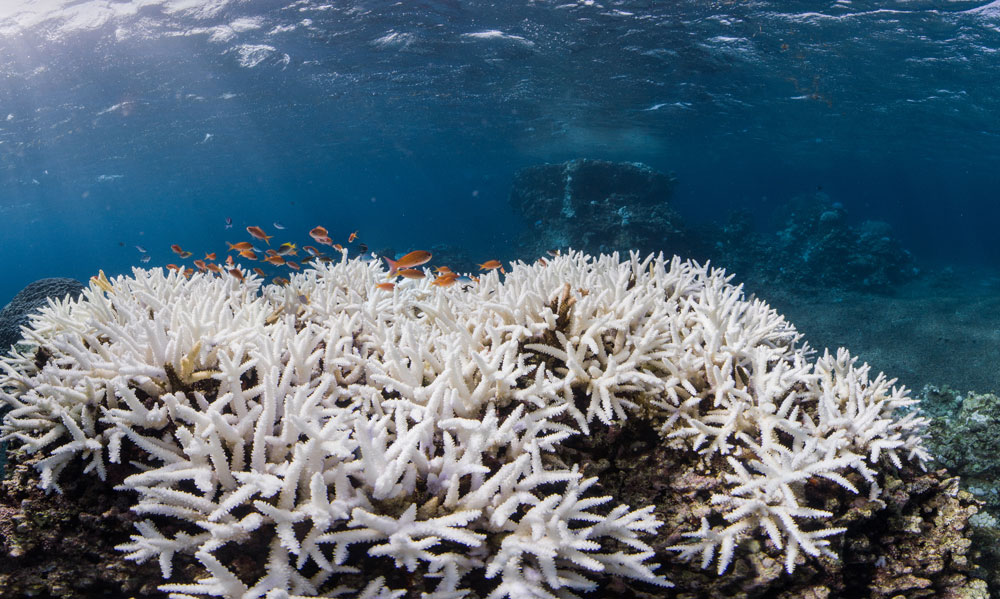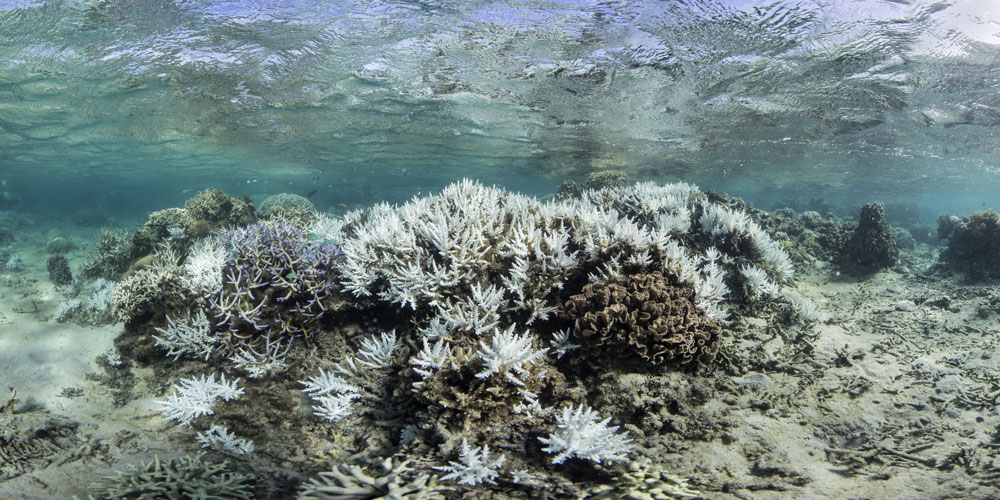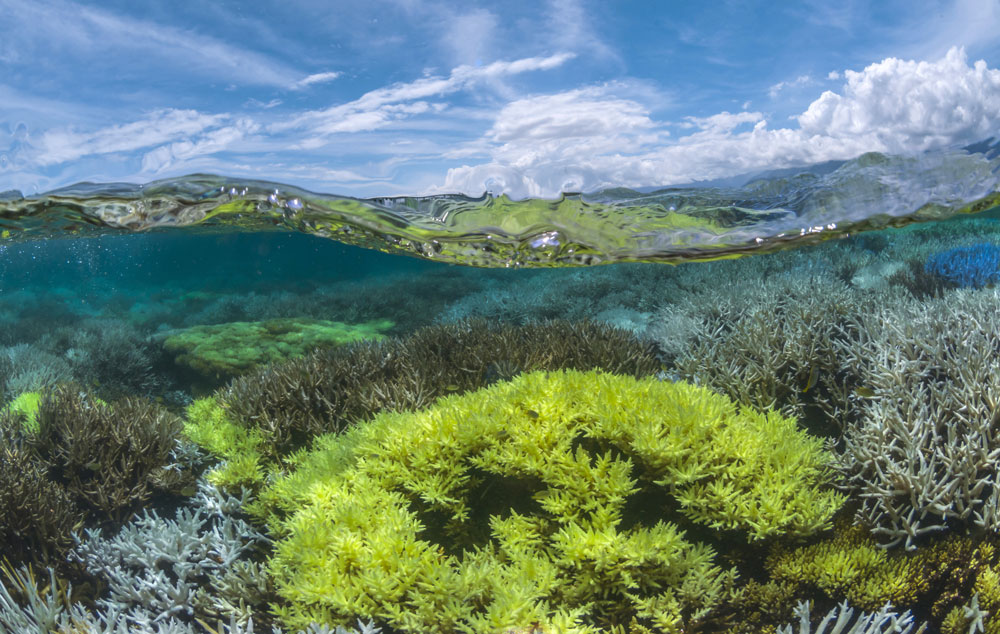Coral reefs are vital ecosystems that support a vast diversity of marine life, provide coastal protection, and contribute to local economies and livelihoods through tourism, fishing, and coastal protection. The increasing frequency and severity of coral bleaching events in recent decades threaten the future of these ecosystems and the biodiversity they sustain. Efforts to mitigate climate change, reduce pollution, and protect coral reefs are essential to further prevent coral bleaching, disease, and death, and to support the recovery of damaged reefs.
What is coral bleaching?
Coral bleaching is a phenomenon that occurs when corals lose their vibrant colors due to stress. A coral holobiont or coral for short, is essentially made up of an animal (polyp), symbiotic photosynthetic algae (zooxanthellae), and microorganisms (bacteria, archaea, fungi, and viruses). When bleaching occurs, corals expel the colorful zooxanthellae living in their tissues, revealing the white calcium carbonate skeleton underneath, hence the term “bleaching”. When bleaching occurs, corals are left without their main energy source (nutrients). They are more vulnerable to disease and will starve to death unless conditions improve and the zooxanthellae return.



Coral polyps, even those within the same colony, may react to heat stress in different ways. Some parts of a coral may pale, others may bleach entirely, and some may appear normal. Some corals may even produce bright, fluorescent pigments. This phenomenon has only been studied relatively recently and occurs when corals create photoprotective pigments (similar to sunscreen) that aid in the recolonization of their symbiotic algae (you can learn more about this phenomenon here).

Corals can also undergo “zooxanthellae shuffling,” taking in and expelling different types of symbionts until a more heat-tolerant strain takes up residence. They may also rely more on consuming plankton and organic matter to help sustain themselves under low photosynthetic activity. Though corals have amazingly flexible metabolisms, severe, prolonged stress often proves fatal.

What causes coral bleaching?
Bleaching is a general stress response of corals and can be caused by multiple environmental changes, including high or low sea surface temperatures, inflow of fresh water, excess sunlight, pollution, and low tides.
Mass coral bleaching events (spanning hundreds or thousands of kilometers) are often associated with severe or prolonged heat stress, including marine heatwaves, which affect large regions and are increasing in frequency due to climate change/global warming.
Are some corals more sensitive to bleaching than others?
Both hard, or reef-building, corals (those that secrete a calcium carbonate skeleton) and soft corals (more flexible animals made up of fibrous proteins) can bleach. However, some “misbehaving reefs” around the globe appear to tolerate more challenging environmental conditions, including higher sedimentation rates and fluctuating temperatures (ie. Red Sea, Honduras).
The sensitivity and susceptibility of corals to bleaching may vary based on the conditions to which a reef has adapted, its species composition, and reef zonation. Species responses may also vary by morphology (coral form) or phenotypic plasticity (the ability to change certain traits due to its environment).
Recent studies also suggest that corals have an¨ecological memory¨and may be able to enhance their tolerance in response to repeated stress events.
What are the impacts of coral bleaching?
If stressful conditions persist for an extended period, bleached corals are likely to die, leading to the degradation of entire reef ecosystems. This decline affects not only corals but also fish populations, invertebrates, and other marine organisms that rely on coral reef habitats for food, shelter, and breeding.
It also threatens the critical services that coral reefs provide to humans!
More information can be found at Reef Resilience Network Coral Threats: Bleaching